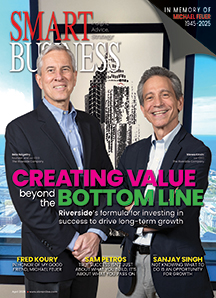How to have a big-company impact on your small-company employees
It seems more than ever that business success is determined by the quality of our employees. Events such as Smart Business’ recent Smart Culture Awards remind us that our employees are our most valuable assets and there are thousands of books that explain how to find the A players who will take our teams to the next level.
One book that addresses this is “Work Rules!” by Laszlo Bock. Laszlo is the former senior vice president, people operations with Google and he has developed one of the most sophisticated and successful cultural platforms in recent history.
You may think that because you don’t run a software company or have Google’s margins that you are not able to retain employees the same way Google has, but Bock explains that nothing is further from the truth.
The best things at work are free
Bock explains there are three defining aspects of Google’s culture. Those are:
- Finding a compelling mission.
- Being transparent.
- Giving our people a voice.
Most importantly, he clarifies that the most critical aspects of their culture are free and can be improved upon on by any business in any industry. In fact, Bock summarizes that the best people primarily stay with a company for the following two reasons:
- The quality of the people they work with.
- The feeling that the work they do is meaningful.
As a business leader, you can take clear action on those two things each day, regardless of your budget.
Lava lamps and beanbag chairs
What are you currently doing to articulate the bigger purpose of your business to your employees? Are you sharing stories about how your product or service changed the success of a customer? Or how you contributed to a safer or more effective experience somewhere in the world? If not, you can and you should. By simply sharing a story each week with your internal staff, you can change their perception of the impact that your organization has.
Also, a lot has been written about how to hire the right people. But to get the most out of them, you have to do more than just get them in your building. How aggressively do you follow through on your promises once they have been hired? Are you making sure your best people are interacting with each other frequently? Are they constantly being challenged in a way that is meaningful and aligned with their personal goals?
Successful cultures don’t focus on lava lamps and beanbag chairs. They tap into their employees’ need to become the best version of themselves. What activities are you focused on this week to help them get there?
Sam Falletta has developed successful customer acquisition and retention strategies for some of the largest brands in the world, including Microsoft, Ford, Honda and the American Red Cross.

